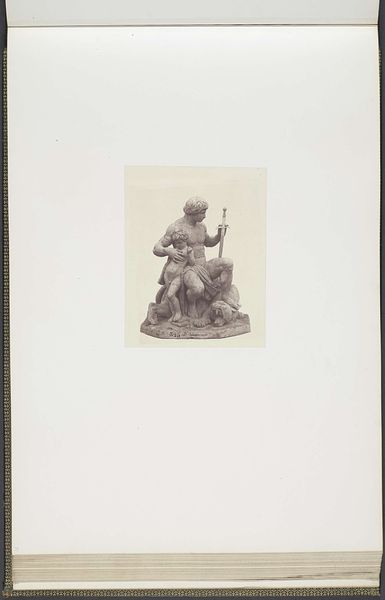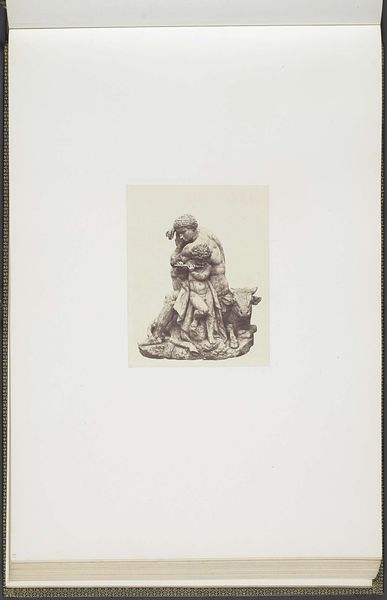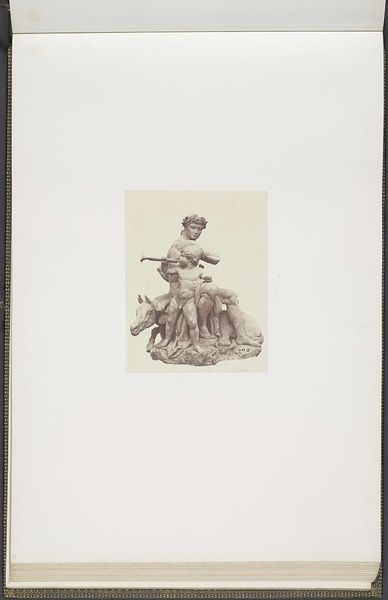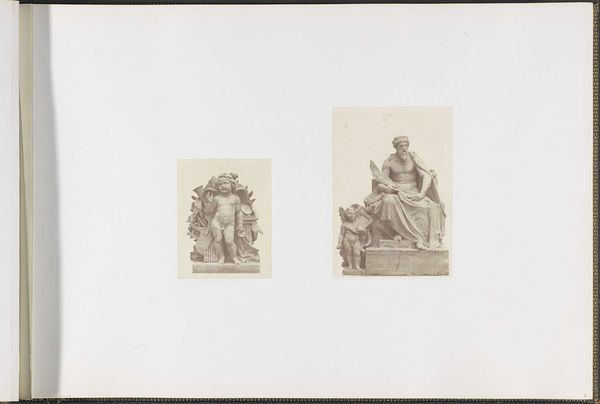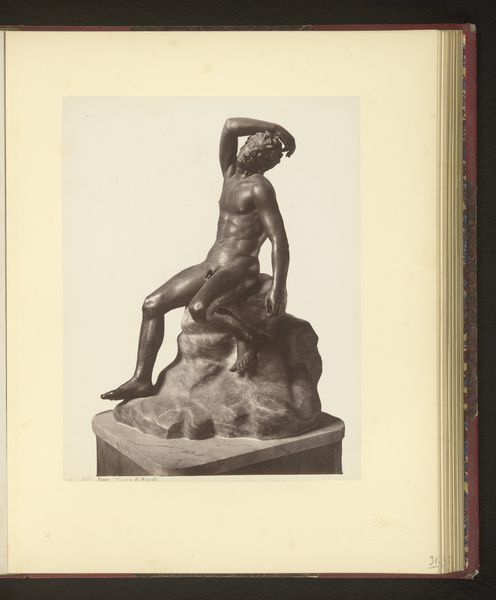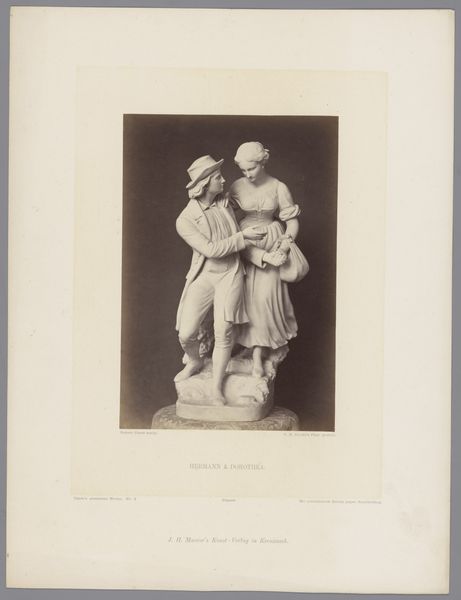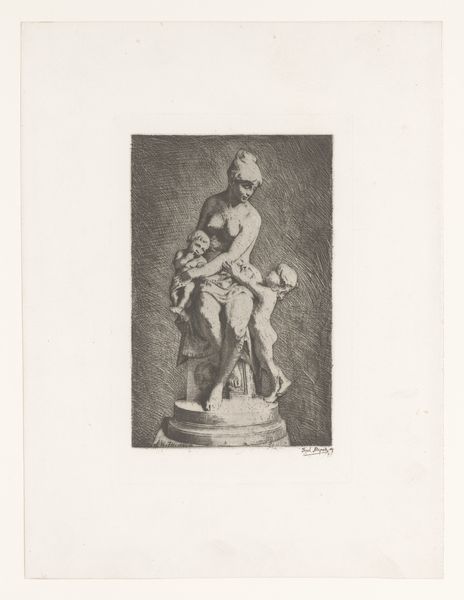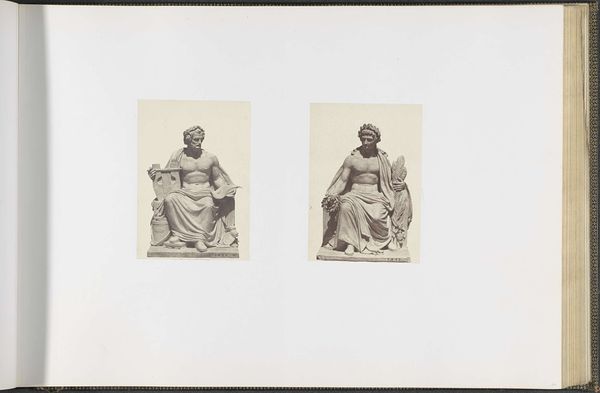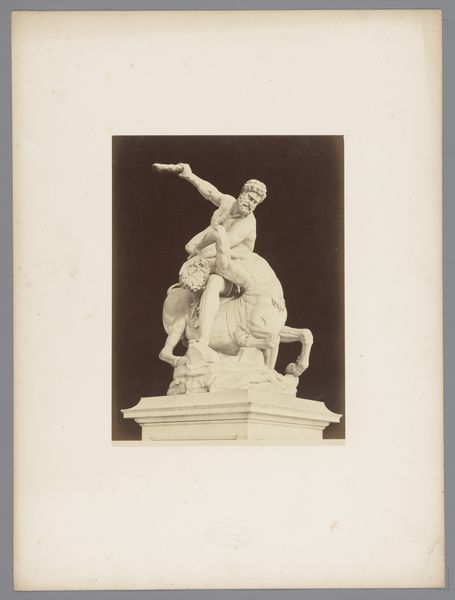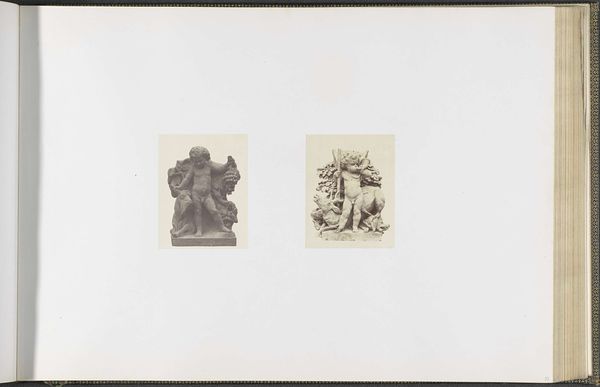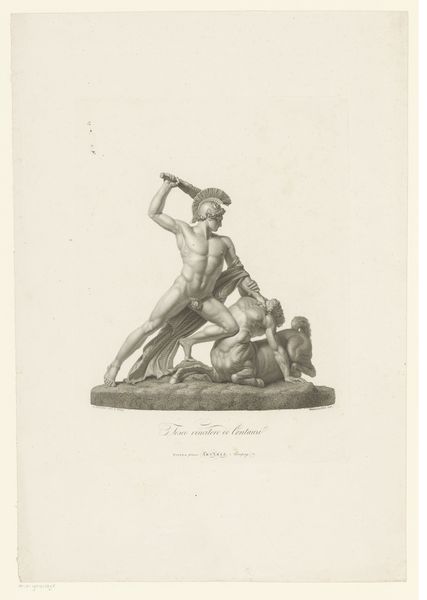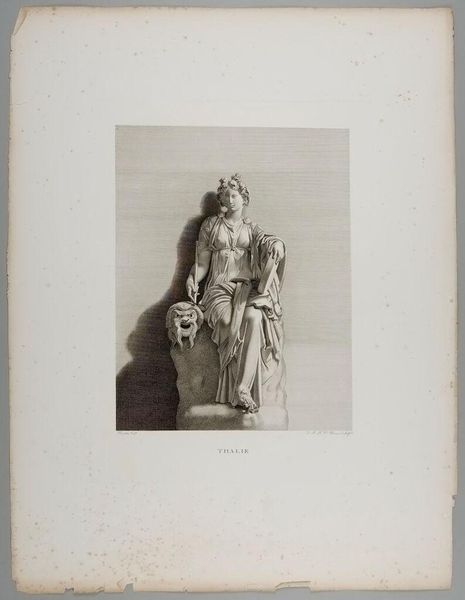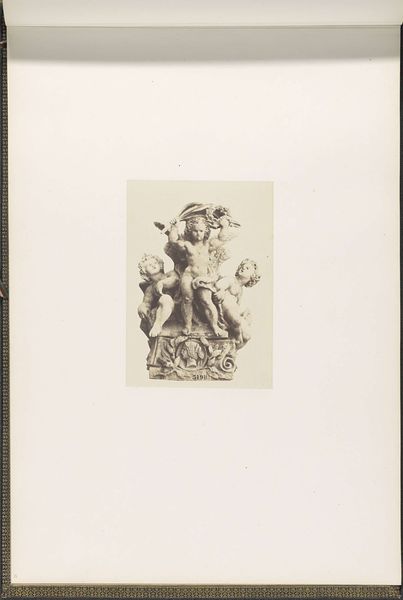
Gipsmodel voor beeldhouwwerk op het Palais du Louvre: "La Force" door Antoine-Louis Barye c. 1855 - 1857
0:00
0:00
bronze, photography, sculpture
#
portrait
#
neoclacissism
#
bronze
#
figuration
#
photography
#
sculpture
#
history-painting
Dimensions: height 382 mm, width 560 mm
Copyright: Rijks Museum: Open Domain
Curator: This is a photograph of a plaster model for a sculpture titled "La Force," or "Strength," created by Antoine-Louis Barye around 1855 to 1857. Editor: My immediate impression is one of guarded tenderness. It seems caught between classical heroism and vulnerability, a fascinating contrast. Curator: The sculpture, part of the decoration for the Palais du Louvre, depicts a muscular man, a personification of strength, seated upon a lion, with a young child nestled beside him. Barye, deeply rooted in the Neoclassical movement, aimed to imbue his work with moral and symbolic meaning. Strength, of course, being a valued virtue, particularly within nationalistic narratives. Editor: Absolutely. We should also question how "strength" is presented here: a masculine figure dominates, seated above the lion, with a child included to soften his gaze, I suppose. Power is a constructed and heavily gendered narrative here. It begs the question of who has access to this perceived notion of strength, and whose strength is actively suppressed in order to perpetuate this ideal? Curator: That's an interesting perspective. I read the lion, a traditional symbol of courage and might, combined with the protective stance towards the child, as representing strength tempered by responsibility and care. Perhaps the spear he holds symbolizes strength in action, but it also underscores the weight of defense and authority. Editor: But isn't this exactly the problem? This very specific representation of “strength” perpetuates hierarchies. I wonder, if “strength” also involves emotional vulnerability, or the ability to nurture rather than dominate, could the man willingly cede his spear, moving toward a less martial representation of power? How is power inherited, taught, enforced through cultural symbols such as this? Curator: It could certainly be argued that Barye's intent, in its historical context, might not have fully encompassed these contemporary ideas around gender and power dynamics. The enduring symbolism is that power carries an inherent burden. One is also reminded how classical ideals shaped not just aesthetics but social hierarchies as well. The image speaks, perhaps unintentionally, of the responsibilities tied to wielding any form of power. Editor: This makes us actively challenge the historical values imposed on the viewer, and the continued relevance of Neoclassical interpretations of figures. What does ‘strength’ look like today? Curator: That’s right. This photograph capturing the model serves as a mirror, reflecting back not just classical ideals but also the continuing conversation around power, responsibility, and representation in society. Editor: It challenges our viewers today to not passively accept the statue’s intention but actively engage with the social constructs the statue represents. It encourages our reflection and questioning.
Comments
No comments
Be the first to comment and join the conversation on the ultimate creative platform.
